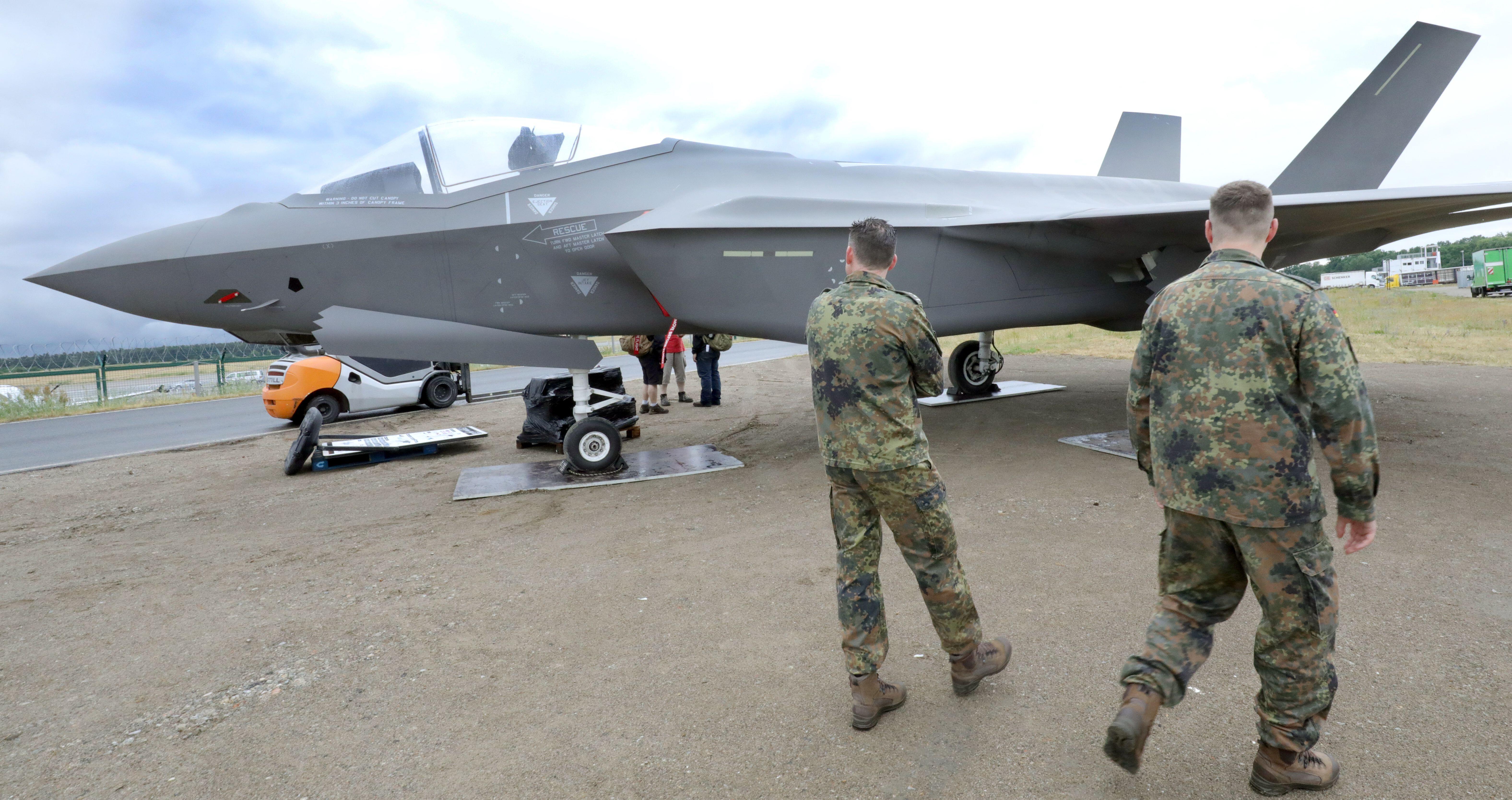
BERLIN—Germany is pursuing an accelerated timeline for its Lockheed Martin F-35 Joint Strike Fighter acquisition as the country looks to bring the aircraft into operation before the end of the decade.
Berlin presented a letter of request to Washington to acquire the aircraft just three days after announcing on March 14 it had selected the type as part of the Tornado replacement program, J.R. McDonald, Lockheed’s head of F-35 strategy and development, told a press conference here at the ILA Berlin Air Show on June 22. McDonald says the company and the F-35 Joint Program Office are “sprinting to try and understand the German requirements.”
Lockheed hopes to finalize what will be in the package by the fall in preparation for the German Parliament approval process. Package details are expected to include the number of aircraft, training needs and weapons requirements. McDonald says Germany requested Block 4-model aircraft at the Technical Refresh 3 (TR3) standard.
Berlin is expected to acquire around 35 F-35As to form a silver-bullet force that will take on the Tornado’s nuclear-deterrence mission using U.S. dual-key B61 nuclear weapons.
Discussions also are covering how to prepare the Buchel Air Base—the home of Germany’s nuclear-armed Tornados—for F-35 operations.
The acquisition of the F-35 is part of an approximately €33 billion ($34.7 billion) spending on aerospace programs through Germany’s newly approved €100 billion armed forces reequipment fund, announced by Chancellor Olaf Scholz shortly after Russia’s invasion of Ukraine.
McDonald also notes the U.S. government is now more open to requests from European countries to have their F-35s produced at the Italian Final Assembly and Check Out (FACO) facility at Cameri.
Until now, only Italy and the Netherlands have been approved to have their aircraft built there. Switzerland has inquired about having most or part of its fleet built in Italy, as the Cameri facility is just a few minutes’ flying time from the Swiss border, and there is a significant Italian-speaking community in the country.
McDonald says customers had to recognize the rate of production from Cameri was much lower than that of the primary production site in Fort Worth.
“The most likely scenario would be that they receive some aircraft from Cameri and some aircraft from Fort Worth,” he says. “Building exclusively at Cameri may stretch out the delivery time.”
McDonald also acknowledges there has been a bid from Poland to accelerate aircraft deliveries in light of the security situation in Europe. He says it is unlikely countries will receive aircraft earlier than scheduled, but there could be what he calls “capacity opportunities” to accelerate the delivery profile. F-35 production capacity is 156 aircraft per year across all three of the final-assembly lines in Italy, Japan and the U.S.
Some 128 F-35s are now stationed in Europe for Italy, the Netherlands, Norway and the UK, as well as U.S. Air Force aircraft based in the UK.
